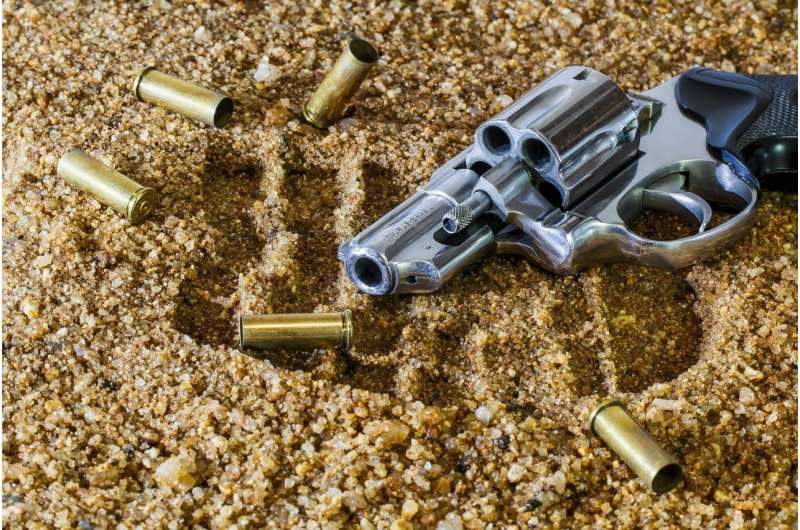Why Australia's famed gun control laws probably wouldn't reduce shooting deaths in America

On a Sunday in the Tasmanian town of Port Arthur, a lone gunman shot an elderly couple at the inn they owned, 22 diners lunching at a nearby tourist spot, two tour bus drivers and several of their passengers, four occupants of a BMW, and two customers at a gas station.
By the time the bullets stopped flying on April 28, 1996, 35 people were dead and 23 more were wounded. It was the worst mass shooting Australia had ever seen.
In a matter of months, Australia rolled out the National Firearms Agreement, which banned the possession of automatic and semiautomatic firearms in all but "exceptional circumstances." About 640,000 guns were surrendered through a gun buyback program and 60,000 more were turned in to authorities for free in 1996 and 1997.
Australia has not seen a shooting like the Port Arthur massacre since, and the National Firearms Agreement is widely credited for this success. Gun control advocates in the United States—including former President Barack Obama—have spoken admiringly of the law and suggest it should be a model for reducing gun deaths here.
That wouldn't do any good, according to the authors of a new study.
Mass shootings get the most attention, but they account for a tiny fraction of total gun deaths in the U.S., data from the Centers for Disease Control and Prevention show. Among the nation's 36,252 firearms-related fatalities in 2015, 61 percent were suicides and most of the rest were ordinary homicides.
Neither of those kinds of deaths actually fell in Australia as a result of the National Firearms Agreement, researchers reported last week in the American Journal of Public Health.
"Many claims have been made about the NFA's far-reaching effects and its potential benefits if implemented in the United States," wrote Stuart Gilmour, a statistician at St. Luke's International University in Tokyo, and his coauthors from the University of Tokyo. "However, more detailed analysis of the law shows that it likely had a negligible effect on firearm suicides and homicides in Australia and may not have as large an effect in the United States as some gun control advocates expect."
Previous studies have said otherwise. A 2010 report in the American Law and Economics Review concluded that "the buyback led to a drop in the firearm suicide rates of almost 80 percent" and had a similar effect on gun-related homicides. But that study ignored the fact that gun deaths were already falling when the program went into effect.
A 2016 study in the Journal of the American Medical Association acknowledged that a decline in gun-related suicides and homicides was indeed underway but said these mortality rates dropped more sharply in the aftermath of the NFA. However, the JAMA study failed to consider deaths that had nothing to do with guns. That means they might have given the gun control law credit for something that would have happened anyway.
Gilmour and his coauthors attempted to solve these problems by using a statistical method known as "difference-in-difference." This approach turns real-life events into scientific experiments in which one group is subjected to an intervention and another group serves as a control.
In this case, the intervention was the National Firearms Agreement. It could have affected Australians who were inclined to use a gun to commit a suicide or homicide. But Gilmour's team assumed it would have no effect on suicides and homicides that did not involve a gun. This was their control group.
Their difference-in-difference analysis revealed that although the rate of gun-related suicides fell steadily after the NFA went into effect in 1997, that decline was part of a larger trend that began in the late 1980s—and wasn't altered by the new law.
Likewise, homicides in Australia were already dropping when the National Firearms Agreement went into effect. The rate of gun-related homicides fell in the wake of the NFA, but the law had no effect "over and above a broad decline" in homicides involving all kinds of weapons, the study authors wrote.
To test the strength of their results, the researchers repeated their analysis using 1998 (not 1997) as the first year of the NFA era. They also tried using earlier start dates for their pre-NFA period, in case their initial choice happened to skew the results. The findings were "mostly unaffected" by these changes.
It's not that the National Firearms Agreement was a bad idea. It's that other things going on in Australia must have made a bigger difference—one that swamped any help the NFA might have offered.
The researchers can't say for sure what those other things were, but they have some ideas. They noted that Australia implemented a nationwide youth suicide prevention program in 1995 and one for adults in 2001. Either or both programs could have helped reduce suicides, including suicides carried out with a gun.
In addition, the Australian Institute of Criminology developed gun control policies that were adopted in 1991—five years before the NFA.
"It is likely that these more comprehensive and detailed 1991 changes played a greater role in reducing firearms-related suicide and homicide than did the NFA, which was implemented solely for the purpose of eliminating mass shootings," Gilmour and his colleagues wrote.
If that is indeed the case, trying to pass an American version of the National Firearms Agreement could be counterproductive, they added.
"It is imperative that this political moment ... not be squandered on a law that will have limited impact," they wrote. "To achieve real, sustained reductions in the majority of causes of firearm-related mortality, the United States needs a broader, more comprehensive range of gun control measures than those in the NFA."
©2018 Los Angeles Times
Distributed by Tribune Content Agency, LLC.














